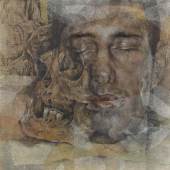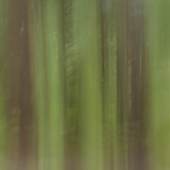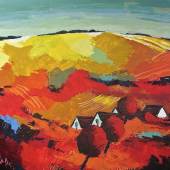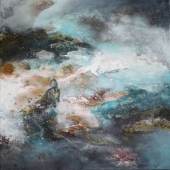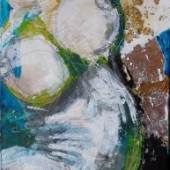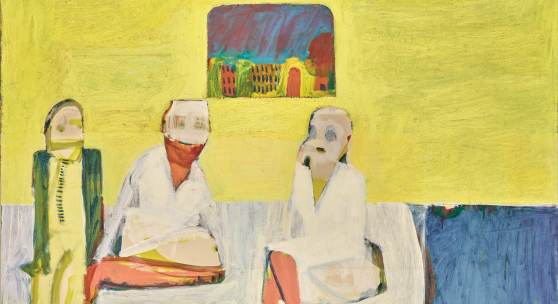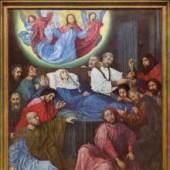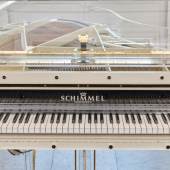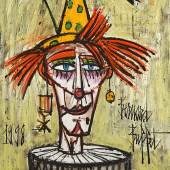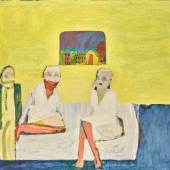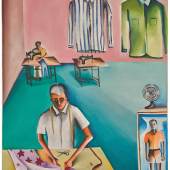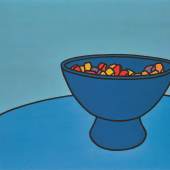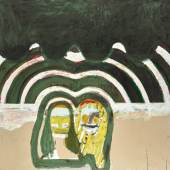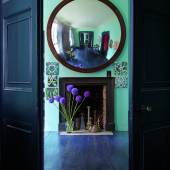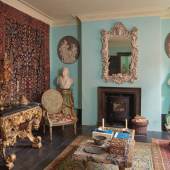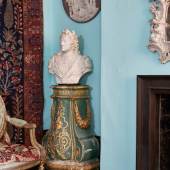Auction
The Personal Collection of Howard Hodgkin & 1,000 Years of Middle Eastern Art
-
Auktion24.10.2017
Howard Hodgkin redefined the way in which we look at the world; he developed a personal pictorial language that speaks of interactions and emotions. Just as his eye for the exceptional resonates through his paintings, his ability to identify the extraordinary in unexpected places was deployed in his incessant hunt for art and objects of exquisite beauty. While each of Hodgkin’s paintings evokes his response to a very particular place, person or situation, the items he surrounded himself with in his home offer a personal portrait of their owner, one of the greatest artists of our time. The kaleidoscope of objects he so carefully drew together take us behind his paintings and cast new light on his aesthetic innovations, revealing what inspired him and what he held close. This October, Sotheby’s will exhibit some 400 items from the personal collection of Howard Hodgkin to be sold at auction in London on 24th October 2017.
The objects with which he was surrounded reflected his passions, influences and interests and nourished his paintings. As items were purchased he would find a space for them, move them around and then finally settle on a place he felt they should stay, according to the other objects around them, creating dynamic visual dialogues. Objects from Italy to India, which suggest a modern day grand tour, were displayed side by side, heightened by the jewel-like tones with which the walls of his London home were painted. Spanning art history through time and geography, they offer a vivid revelation of his private world in all its intense and exhilarating glory.
Speaking of his creative method, his partner Antony Peattie explains, ‘most of his work took place in his mind’. His compositions and strokes were envisaged before he took up the paintbrush, enabling him to execute his vision with swift, confident brushstrokes. ”It’s all grist to the mill”, Howard insisted... He collected in order to create new work. What he acquired fed into his work.”
Hodgkin did not keep his own work as he said they got in the way of new work, though he did keep two paintings from his debut show at the ICA in 1962, Bedroom and Travelling. “I have absolutely no desire to collect my own work, but do have what with age seems an almost unquenchable thirst for acquiring other things to look at,” Hodgkin stated. “I think of collecting as a sort of virus really, and I was infected... It is an addiction”. So much so that he kept auction catalogues and a tape measure by his bed, marking things that he fell in love with.
Speaking of the forthcoming sale Antony Peattie said: “Howard liked the idea of a sale after his death. The objects have served their purpose to him, they were what he called his ‘Must Haves’ that, in some mysterious way, fed his work. But now they amplify his absence. After he died the house was so sad: all these objects remained in place but, after 33 years that we spent together, everything had changed. The sale represents a personal portrait of Howard. And it will enable his executors to fulfil his wishes.”
A PRIVATE PASSION
The discreet exterior of the house that was Howard Hodgkin’s London home in Bloomsbury for over 30 years gave no indication of the richness within. Opening the door was akin to stepping into one of his paintings. Art and objects of resounding beauty diffused to stunning effect resulted in unexpected dialogues.
With the surprising and inspired configurations in which he displayed objects Hodgkin created an entirely new aesthetic. He had an unusually democratic approach to collecting, not adhering to the traditional collecting hierarchy of one medium taking precedence over another – an oil painting taking greater prominence than a watercolour, for example. So confident was he in his selection and of the importance of each piece to his needs that he created his own collecting alchemy. His approach was instinctive and his placements created unexpected yet harmonious arrangements, new works of art in effect.
Surprises lay around every corner of the house. A precious 17th-century Indian sandstone relief formed a backdrop in the kitchen to the artfully stacked china on display. Subtle and knowing conversations between disparate objects were formed across the spaces of rooms. An exquisite fragment from a carpet, with its interlocking geometric pattern, faced a series of wall-mounted Kashan star tiles, and the foliate motifs were echoed in monochrome form in the craftsmanship of an exquisite inlaid Mughal box.
Ornamentation is a prominent thread that runs through the great variety of objects he was drawn to, from both India and Islamic cultures. He especially sought fragments – particular motifs, calligraphy, colours and textures appearing in Ottoman, Indian and Islamic tiles, textiles and rugs. Fragments of calligraphy were not sought after for their meaning, but purely for the visual language of their linear forms, and he honed in on specific parts of larger pattern schemes. In doing so he focused on small yet powerful details, freeing his imagination from the original form.
-
Er gilt als der größte niederländische Maler "Hugo van der Goes" im sp...
-
23.01.2025 - 30.01.2025Vom 23. bis 30. Januar 2025 präsentiert Sotheby’s eine außergewöhnliche Online-...
-
06.03.2025Sotheby’s, eines der weltweit führenden Auktionshäuser, beginnt das Jahr 2025 mit einer...
-
24.10.2017Auktion »
Auction in London on 24th October 2017.
